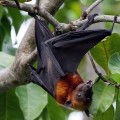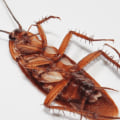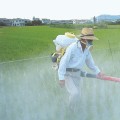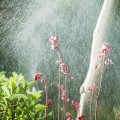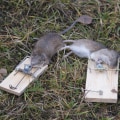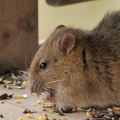At present, only a readily available insecticide is known to reduce and kill earthworm populations. Sevin, a carbyl-based product, is intended to kill larvae in lawns, but has also been found to reduce earthworm populations when used in recommended dose amounts for larvae. Sevin insecticide granules are not labeled to kill worms. There are no products on the market in the United States that are labeled for earthworms, as they are largely beneficial creatures.
Most insecticides do not penetrate the soil far enough to affect worms. While earthworms are generally beneficial to lawns, sometimes their populations can get out of control. You will then see mounds on your lawn where they enter and leave the ground. Earthworms can be controlled by using carbamate compounds.
Sevin, Turcam and Baygon are some insecticides containing carbamate compounds. To keep the population low, you'll need to apply the insecticide two to four times a year, but no more than once every seven days. While some pests are a nuisance, earthworms benefit most lawns and gardens by aerating the soil, improving water drainage, and introducing organic matter through decay. An organic pesticide that does not kill worms or other beneficial insects should be part of every gardener's arsenal.
Following proper application procedures can ensure that the pesticide works effectively without killing worms. Now there are several pesticides on the market to kill the larva worm in the lawn and garden. Diazinon has been around for years and is an old substitute for the home gardener. Diazinon is effective, but the disadvantage is that it can take 3 weeks for the insecticide to kill the larvae in the treated area.
Please don't write to ask where can I get these products. The market changes too quickly and governments continually remove effective chemicals from the market. Keep in mind that maintainers have access to professional chemical supplies, which require training to use them safely. Worms produce worm casts (small piles of digested soil), which are unsightly, slippery and blunt lawn mowers, affect play on sports turf (for example,.
Bowling, croquet and golf) and making balls, etc. The molds can also act as seedbeds for weeds. The action of worms can also facilitate weed growth by pulling seed material from the surface. Worms are a source of food for birds and animals, many of which are not desirable in sports or on fine grass.
Birds leave droppings and can damage grass by pecking. Excavating animals, such as moles, can destroy huge areas of expensive grass in search of worms. Worms aerate the soil through their movement, improving its structure and processing waste material (for example,. Worm molds can be removed mechanically by brushing, changing or using a drag mat.
Brushing is only possible for small areas. The change involves the use of a long switch, such as a fishing rod, the end of which is quickly swept over the surface of the grass. Telescoping, 4-6 m long, with a thin fiberglass tip are available and can cover large areas quickly. While they are primarily meant to break the morning dew, they break or stain worm casts.
A drag mat allows large areas to be processed. While this overcomes the immediate problem, the worm molds will be there the next morning. Alternatives are to discourage, eliminate or kill worms. Worms are not necessary for a healthy lawn; they do nothing unique.
Worms do not look for soils with high acidity (low pH% 3D acid). There are products that intentionally acidify the soil surface that aim to drive the worm off the surface. The acidifying agent needs to be reapplied in periods of 2 to 4 weeks. I would raise an eyebrow at this approach.
Turf, like worms, has a preferred pH range (see diagram on the right) and turf viability is likely to be affected if its conditions are changed. However, there are grasses that like acidic conditions, but they may not offer the properties required for lawns, for example,. Wear resistant, drought resistance, etc. Also, if you pour something on the soil and reapply it often, where does it go? Does down seem like the obvious answer for worms to be driven lower and lower? Potassium permanganate is a powerful oxidant and its storage is of concern.
Use the Internet to locate the products available in your region given the active ingredients. The good news is that there are products that are not specifically sold as vermicides, but they do reduce the worm population. Usually, fungicides, which are routinely applied to sports turf, have this beneficial side effect. Worms are beneficial to lawns and will always be present - they are just a drawback when working at the surface level, which should be discouraged.
The best means of discouragement is the regular removal of plant residues by vertical cutting and gentle scarification within the season, that is,. Up to the ground surface and severely on the underlying soil, ideally in autumn. Wet surface conditions should also be discouraged by sarel rocking (soft peaks) during the season and deeper peaks and possible vertical drainage to eliminate off-season compaction. The use of products to mark the lining increases the pH (alkaline), stimulating worms and should be used sparingly, especially towards the end of the season.
It would be a rare situation where repeated acidic chemical applications are required to lower the pH and the pH could be lowered by regular applications of a top dressing of known alkalinity. B) You can use a chemical called Carbendazim to prevent the formation of worm molds. Found in products like Scotts Turfclear, but only comes in 5 litre sizes. However, Nu-Turf produces a product called Nu-Turf Worm Control that contains carbendazim and comes in 1 liter sizes and costs £33.00 + shipping + VAT.
It is stickier than other products and adheres to coating equipment. If you wash it, it's a waste of lining and labor. If not, the box will eventually become clogged. I can't say if, in general, it's more or less economical.
Scott's Grubex is effective and long-lasting pest control, but like diazinon, Grubex can take 3 weeks to kill worms under many conditions. Weekly application of insecticidal soap on foliage can provide effective pest control without damaging earthworms. . .

